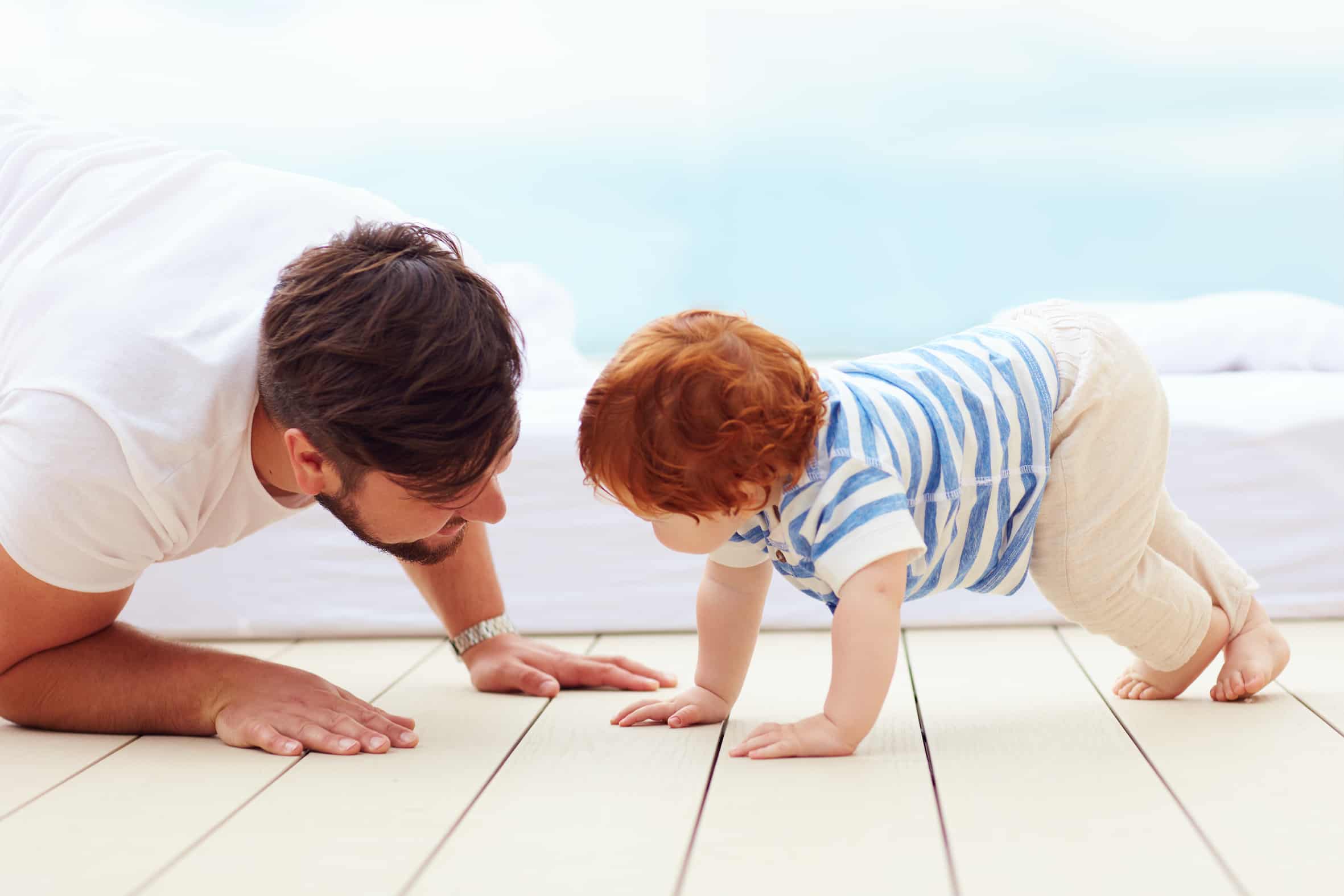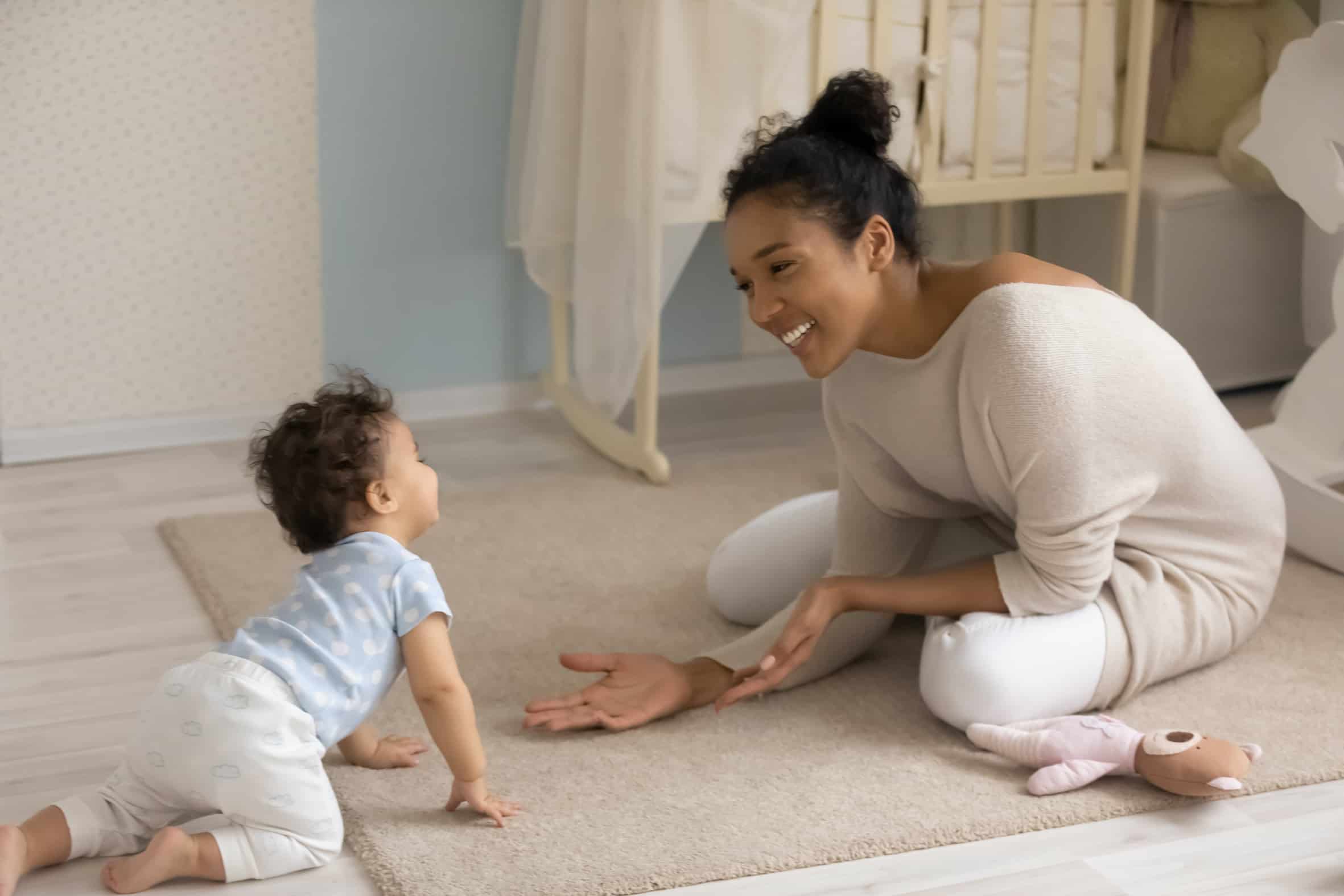tips, tricks and guides for parenthood
For your baby, there are plenty of milestones to reach during their development. This is an exciting time for parents as they eagerly await their baby’s first smile, laugh and steps. One of those important milestones is crawling – a stage where you baby begins to become more mobile.
Before this stage, you couldn’t even imagine your baby being mobile. However, before you know it, they’ll be climbing over furniture and causing chaos.
A good thing for parents is that you don’t actually have to teach your baby to crawl. As they develop and grow, they will naturally get moving on their own. All you need to do is watch and monitor them as they become more confident. Although you can’t physically teach them, there are things you can do to encourage your little one to start crawling. We’ve got some great tips on how to teach baby to crawl by using things to encourage them.

Some babies will be raring to go when it comes to moving around. However, others like to be a little more chilled out. Whatever one your baby is, it’s completely normal. All babies start crawling at different stages and some might want to do it more than others. Regardless of how your baby approaches crawling, you can still try multiple things to encourage them to practice movements and eventually get moving.
Tummy time is a great way of helping your little one strengthens their neck and core- something that is needed for crawling. Tummy time is really as simple as it sounds. You simply lay your baby on their tummy for a short period of time to get them used to lifting their head and being in the position. It’s important to note that your baby should still always sleep on their back and tummy time should be monitored at all times to protect your little one.
You might find that your baby becomes distressed when placed onto their tummy. This can often happen the first few times that you try tummy time. This happens due to it being a new experience for your little one. Whilst they have spent their whole life so far being on their back, this experience can confuse them and may be something that they don’t like.
This process does not hurt your baby in anyway. Their crying is due to the new experience that they haven’t encountered before. If your baby starts crying, only do it for a short amount of time – a couple of minutes is best. You should continue to do this until your baby starts to become more comfortable with the position, this is when you can start leaving them slightly longer.
Introduce toys to make tummy time a positive experience for your little one. You can also lay on your stomach next to them to be down on their level. This can make them feel supported and calm. If you would like to get even more involved, you can place your baby on our front whilst laying on your back. This way, you will be able to see how well they can hold their head up.
As your baby develops, they need to be able to move around freely – this is how they learn to do things like crawling. If your baby is constantly in a walker or bouncer, it will restrict the amount of time spent on the floor which is great for their development.
Bouncers and walkers are great ways to keep your baby safe, especially if you need to pop out of the room. However, when you are with your little one and able to watch them, you should allow them to lay on the floor and encourage them to explore and move.
The more time a baby spends in a bouncer or walker, the more time it will take for them to learn how to crawl. It’s important to let your baby develop and learn naturally. By getting in the way of that, it can delay their learning process and therefore put everything back too.

Your little one will want to move around on their own, but it’s still great to motivate them. It’s great to give your baby goals to reach towards – this teaches them important lessons early in life.
As you baby begins to become more intrigued with moving around, you should make this into a little game. Find their favourite toy or dummy and place it just a little step away from them. We’re not talking about the other side of the room, just slightly away from them so they can’t reach it from their position. This will give your little one a reason to try and move and retrieve their item.
It’s important to remember that your baby may not start crawling in the classic way that you know. There are plenty of ways a baby can crawl around. You can find out about some of these in our ‘When do babies crawl?’ blog. Give your baby time to work out how they need to get to their item. It’s not worth just giving up hope and passing it to them. This will get them into a routine of kicking up a fuss in the hope you’ll just give it to them. These things can encourage laziness.
Your baby won’t be able to crawl right away. But as soon as you put them down on the floor, they can get the hang of it quite quickly. You need to ensure that there is nothing that could potentially harm your baby if they were to grab it. Remove all small items that they could potentially swallow and be mindful about loose cables that could pull items from high surfaces.

You also need to make sure that the surface they are on if comfortable for them. If you have a hard floor, it may be better to dress them in longer clothing to cover their elbows and knees. If your floor is carpeted, it may also still be god to cover their knees to prevent friction burn.
Avoid clothes where any buttons or zips could potentially dig into them whilst trying to move around. If your baby is comfortable, they are much more likely to try and move around.
Some children learn best by watching others do something first. You may look silly, but your baby isn’t going to judge you. If they see you doing something, it’s common that they will try and copy what you’re doing. This is a great technique to use if your baby has older siblings. Get them involved in teaching your little one to crawl – this will make it a funny and enjoyable experience for everyone.
You may think crawling looks easy for your little one to do but it actually takes a lot of practice and strength. Before they even start crawling, they need to develop two important things. Firstly, their muscles need to have enough strength to support themselves, their arms and their legs. This takes a lot of core strength that can be developed through exercises like tummy time.
Secondly, your baby’s brain must be developed enough to know how to coordinate the movement of their arms and legs. However, as soon as they develop these two things, they will be crawling around in no time.
As we mentioned earlier, all babies take different times to learn how to crawl. Whilst some can be early learners, it’s also normal for babies to take a little bit longer to get the hang of it. You shouldn’t be concerned if you notice that your baby isn’t grasping the movement of crawling very quickly – it’s a big learning process for them.
In some cases, there are babies who never crawl. Instead, they go straight from sitting up to walking. This is a normal transition and you should allow your little one to move around how they want to.
If you become increasingly concerned that your baby isn’t developing the skills to move around or is only using one side to move themselves, contact a doctor for their help. Your doctor will be able to assess your baby and see if their progress is normal. There is always help at hand and you shouldn’t panic about your baby’s mobility – there are things that can be done to help them move around better and allow then to get the hang of it.

We touched on this subject earlier. When your baby starts crawling, you need to ensure that the area is fully safe for her/him. Whilst you were able to leave things laying around before, your baby will now be able to get their hands on them. Whilst most things will be okay, there are certain items that cause cause potential harm or injury to your baby.
They might be crawling, but it’s still hard for them to understand what they’re allowed and not allowed to do. Even though you tell them they can’t touch something, there’s a high chance they will go back to it when you’re not looking. To eliminate the risk of your baby hurting themselves, it’s just best to move these things out of the way.
We’ve got some common things that you should take notice of when your baby starts crawling. You can take a look at our other crawling blog to find out what steps to take to make these things safer for your little one.
Things to watch out for:
By taking the right actions with these things, you’ll be able to protect your baby from injury or harm. It will also make you as a parent much more confident if you quickly have to pop out of the room. Knowing there is nothing that your baby can injure themselves with is a great way to avoid anxious thoughts. However, it’s important that someone monitors a baby at all times. If needed, they should only be left for very short periods of time.
The main thing you should take away from this article is that you shouldn’t push your baby to start crawling. It’s a skill that they need to learn on their own and will eventually get the hang of it. Instead, use the tips we’ve provided to encourage your baby to learn to crawl without physically putting them into the position to do so.
Take time with your baby and don’t panic if they are taking longer than you expected. When they do start crawling, you will be wishing you had more time where they weren’t! Watching your little one develops and learn skills is heart-warming and shows they are growing up. Make the most of every moment you share with your little one.